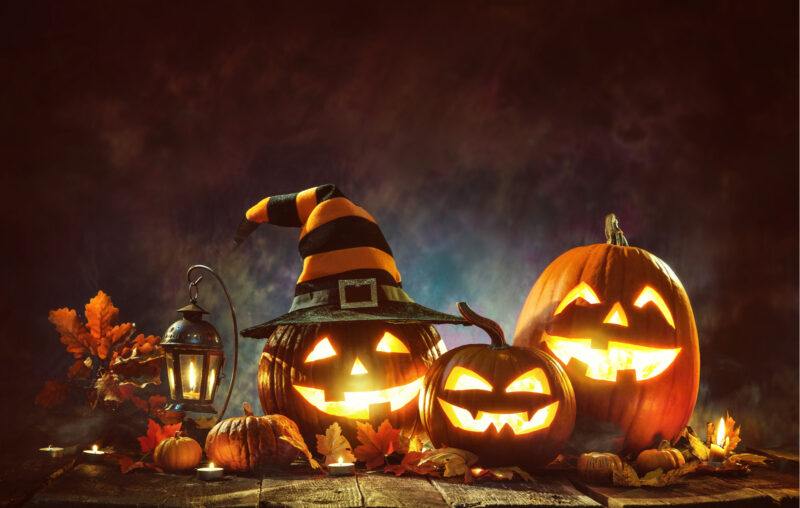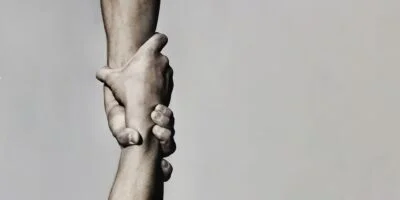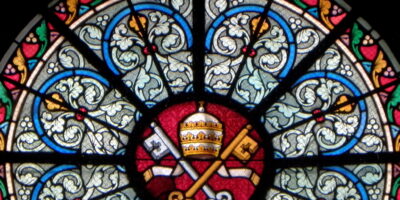The Surprising Social Signals of Halloween

Halloween is upon us, and soon neighborhoods will be filled with children dressed as ghosts, goblins, and virologists dressed in full hazmat suits. It offers children (and adults) a chance to step out of their daily routine and pretend to be something else, if just for a short time.
But Halloween also offers an important, yet surprising, social lesson: cooperation, generosity, and graciousness are crucial for a well-functioning economy.
The Bottom Line of Candy and Costumes
Halloween is big business, and economic forecasters often point to this holiday spending as an indicator of economic health. The National Retail Federation estimates that Americans will spend roughly $10 billion on Halloween-related items and activities. The good news for holiday retailers is that this will top consumer spending in 2019, and may indicate that we are “getting back to normal” amidst the ongoing Covid-19 pandemic. A caveat, though, is that this spending was not inflation-adjusted.
While economic forecasters may celebrate this news of increased spending, it is important to remember the “seen and unseen” lessons of Frederic Bastiat; had this money not been spent on Snickers and Skittles, it would have been put to use elsewhere. Nonetheless, Americans seem to love this holiday and it is good to see them returning to the trick-or-treating streets after a year of playing it safe at home.
The Bah Humbug’ers Two Months Early
Another familiar, albeit pessimistic, take on the economics of Halloween comes from the grumpy ideologues of capitalism. To them, Halloween is a monstrous celebration of the welfare state; a day when children are taught to expect that the sweetest things come from unrequited handouts.
Of course, there are many who have other ideological reasons to reject Halloween celebrations. Religious fundamentalists see it as a celebration of evil, whereas a new breed of social activists consider some forms of dressing up on October 31 to be signs of cultural appropriation. We remain agnostic on their arguments, but do note that both groups view Halloween as potentially creating more social harm (cost) than good.
Rituals, Relations, & Transactions
Are there additional economic and social lessons to be drawn from Halloween, though? Lessons that neither rely upon a narrow counting of dollars, nor an attack on the hidden ideological meanings of our every playful action? And can these lessons teach us something about economics more broadly?
The answer is, of course, yes! Illuminating the trick of how Halloween rituals send secret economic signals and promote market activity is our treat to you!
Our explanation invokes Adam Smith, whose Wealth of Nations placed the division of labor at the center of productivity gains occurring in the late 18th century. But the division of labor is contingent upon the extent of markets, how many people you can trade with. The more people who were caught up in all this truck, bartering, and exchanging the more productivity can be tapped. Expanding markets meant building larger trading communities.
The problem, though, is that expanded markets require interaction with individuals we know little about. That is a scary thought because we don’t know if other humans can be trusted to stand by their word in a business deal. The terrifying fear of fraud keeps people apart and shrinks markets. Therefore, a major task in the construction of a healthy economy is to recognize and expand those social institutions that promote cooperation, coordination, and trust.
Public rituals prime this trust building. To get cooperation and coordination of social activity we have to have some experience with these relationships in smaller scale contexts. Communities do this by providing a series of actions that individuals participate in which can be seen by others and often require some degree of sacrifice – i.e., doing something against one’s own self-interest to signal a willingness to pay a cost for those around you.
If I see you willingly make a “burnt offering” of valuable resources, I can discern from this action that you plan to be in this community over time where sacrifices build relationships. Trust among those that I know well can lead to more trust, including among those I vaguely know, who are part of the community. As such, I am more likely to exchange with a quasi-anonymous vendor because they participate in a cultural framework wherein people do make sacrifices for one another.
Rituals include reciprocity as well. When one makes a sacrifice for us, we return the favor either in-kind via a similar sacrifice, or some acknowledgement that a sacrifice was made. Often this reciprocity is public, visible to others. Cultivating good habits in order to participate in a community also develops graciousness through participation in public ritual.
All of this – sacrifice, reciprocity, graciousness – enables us to weave a social fabric of relations that minimize distrust amongst strangers. We argued this earlier in our praise of gift giving.
Halloween as a Cooperative Public Ritual
Halloween, an extremely popular public ritual, contains all the crucial elements of community building. It requires public sacrifice. Households have to buy treats for the children who ring one’s doorbell. Putting up spooky decorations also represents a frivolous expenditure that signals our willingness to be seen participating in festivities.
Think about your own neighborhood. The neighbors that elaborately decorate their house and give out “the best” candy, provide a signal that they are anchors in the community. Our guess is that they are the ones who are also active in other neighborly activities and are the ones you probably can count on to help during an emergency. What about the neighbors who don’t decorate, darken their house, and refuse to answer the doorbell? Those folks are probably individuals who choose not to engage with others on other dimensions, and are not likely the ones to rely upon when your car needs a jump start. Even if some families find it annoying to constantly answer the door and hand out treats, the pressure to do so falls more heavily on those that are more integrated into the community. The sacrifice is a signal. One night a year they provide a benefit for all the community’s children; the holiday reinvigorates neighborly cooperation.
Halloween also teaches graciousness (or at least it should). Children learn that they can count on the kindness of “strangers” (i.e., families they might not interact with in the neighborhood regularly), but it is important to say thank you for such generosity. And this is true for adults as well. Empty nesters whose children benefited from trick-or-treating in the past now find it is their turn to return the spirit of generosity to the next generation. All of this belies the odd notion that Halloween is nothing more than a “welfare handout holiday.”
Not all people celebrate Halloween. There are families who have religious objections to the holiday, as we noted above. Many of them, however, organize alternative “harvest festivals” with games and other activities that accomplish the same thing as Halloween celebrations. We do live in a world of diversity and according individuals their rights of conscience is important. That they organize parallel rituals that publicly display sacrifice and reciprocity is a good indication that they too are willing to be good neighbors.
(As a side note, our discussion of Halloween refers to the tame version as we know it today. The holiday does have a more mischievous past [caution: crude language], but institutional entrepreneurs found ways to divert malevolent traditions in a more socially beneficial direction. Even the Celtic holiday of Samhain, which is considered to be the foundation for our contemporary celebrations, had its basis in ritualistic giving and public cooperation, not unlike how we celebrate today.)
Relations before Transactions
Economist Glen Loury wrote famously that it is important to build relations before transactions. He did this to fill out Nobel Laureate Gary Becker’s famous work on human capital. Knowledge is an important element of human capital, but so are human relationships.
Even before we trade – before we buy the widgets our economic forecasters so like to count in their GDP estimates – we must determine if we are going to interact with someone in the first place. Learning to interact and build trusting relationships among broad, cooperative networks of people is essential to a healthy economy. Public rituals, like Halloween, provide those opportunities to build social connections. Their benefits are not counted in the final, cold tally of GDP, but they are fundamentally important to a flourishing society.
And so, when those goblins and ghouls come knocking at your door on October 31st, cherish that you are part of a community that values sacrifice, graciousness, and cooperation.











